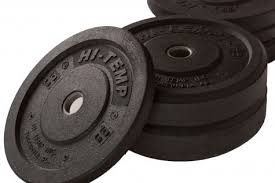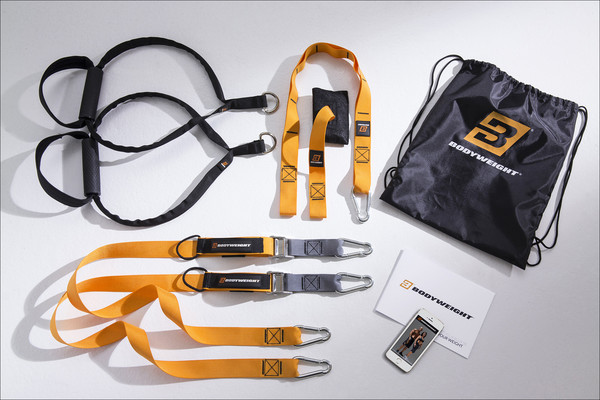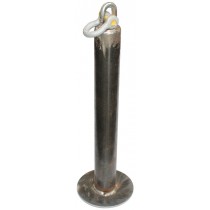Search results for:

I’ve been working with a lot of students lately in my clinical practice as a physical therapist lately. In my experience most students tend to have pretty good clinical decision making skills, a fairly sound evidence based approach as well as some solid evaluation and treatment ideas.
When it comes time for program directors to visit their students at our clinic they usually ask about ways to improve their physical therapy curriculum. Far and away the biggest comment I give is the lack of experience with exercise selection.
I also feel that as a profession overall we lack a bit in this area. We do a good job of finding evidence based EMG exercises for specific conditions but sometimes drop the ball when it comes to finding great exercises that are specific to getting back to sport. Those basic exercises are of extreme importance but what do we do once our athletes reach their maximum benefit from these exercises and aren’t yet back to their activities. I work with a decent number of weightlifters and crossfit athletes. Besides a lack of knowledge of their sport, the second biggest reason for failed previous treatment is a lack of specific exercise progression to get them back to their activities. Getting someone back to their ADLs pain free and getting them back to high level performance are two different things.
I wanted to put together a series of exercises I use with my athletes to get them back to their sport. These exercises are specific to strengthening and conditioning an athlete along their rehab/physical therapy process. The first example will be a series of closed chain exercises. Populations that would benefit from these exercises would be a gymnast or crossfit athlete that wants to return to handstands, handstand walking or any other closed chain pressing …read more

1) Running Drills Every Triathlete Should Master
I use these drills at least several times per week. They’re excellent drills from a rehab perspective as well as from a performance perspective. Chris Johnson is also an athlete and excellent therapist.
2) TED talk with Lorimer Moseley on Pain
This is another video I point patients to frequently. Pain is a very complex topic and understanding it is enormous from a rehab and injury prevention perspective. Lorimer Moseley helps out on this front with an entertaining and informative video.
Now You’re Smarter,
Dan Pope DPT, CSCS
P.S. If you enjoyed this article then sign up for the newsletter to receive the FREE guide – 10 Idiot Proof Principles to Performance and Injury Prevention as well as to keep up to date with new information as it comes out via weekly emails.

Several months ago I had the opportunity to see Adriaan Louw speak. I really enjoy Adriaan’s perspective and appreciate the work he’s done in the areas of chronic pain understanding and rehabilitation. His books are excellent for patients and if you’ve never heard him speak. His info is equally informative, immediately applicable and incredibly entertaining.
One thing that Adriaan spoke about that I’ve been wanted to share for some time was sleep hygiene. What’s interesting about sleep is that it’s going to be beneficial for just about everyone. We have plenty of research to support this and it can be very valuable for both athletes (Looking for optimal performance) and patients in chronic pain (To get out of pain).
I think most people understand this (Maybe not in the chronic pain population as a means to help decrease pain) but don’t always implement this knowledge into their athlete’s program or patient’s plan of care in a practical way.
Changing behaviors is our priority and knowledge is not always enough. Take for example our current obesity epidemic. We have an enormous problem here but really no lack of information on how to change the problem. Everywhere you look there is a book or doctor or trainer out there espousing how to lose weight. Knowledge doesn’t always change behavior. If this was true we wouldn’t have this problem on our hands. Putting that knowledge into action is the key. This also goes for something like getting better sleep at night.
One thing I’ve been recently doing is sending patients home with this information and making goals for them to incrementally reach those goals. Adriaan gave a nice practical and comprehensive program for increasing hygiene and that’s what I’m going to share today. He recommends trying to implement one of these strategies each night until you’ve accomplished …read more


Omgående leverans.
20 kr i frakt
I paketet ingår:
• Två justerbara träningsband av förstärkt nylon
• Två handtag med fotöglor under
• Fyra karbinhakar stål
• Extra bandfäste med extra karbinhake
• Dörrfäste
• Väska / ryggsäck
• Bodyweight® broschyr
• Bodyweight® iPhone App med fler än 100 videos och träningsprogram – GRATIS!
Att använda Bodyweight system
Alla våra övningar är anpassade för att så många som möjligt ska kunna utföra dem. Hur tung eller svår du vill att övningarna ska vara, bestämmer du själv enkelt genom att ändra din kropps lutning i förhållande till Bodyweight® Training Systembanden.
SÅ HÄR SÄTTER DU UPP BANDEN!
Det finns ett antal säkerhetsföreskrifter att följa och även instruktioner för hur banden sätts upp.
Vi har valt att sammanställa detta i en användarguide, som du hittar hittar här >>.
Där kan du även läsa vad det är som följer med i lådan, när du köper ett Bodyweight® Training System.
Så här gör du för att hänga upp banden i en dörr:

ÖVNINGAR HITTAR DU I SHOPEN
Vill du ha tillgång till övningarna i mobilen laddar du enkelt ner vår app helt kostnadsfritt.
Appen kan du hämta på App Store eller genom att klicka här >>.
Om du hellre vill skriva ut övningarna, kan du ladda vår White Paper – den får du om du Klickar här!

I spoke recently at power monkey camp with therapist Dave Tilley in Crossville Tennessee. He was a big advocate of creating a spectrum of exercises in order to improve someone’s movement. In other words, he didn’t believe that solely lying on a foam roller would yield the best carryover to your push jerk. You’re probably missing some steps in between.
A better system might:
An example for someone with a crummy handstand because of limited wrist mobility would be:
- Wrist mobility drills x 10/side
- Active wrist extension in quadruped x 5-10 per side
- Forward Crawling x 5-10 steps / side
- Handstand Specific Work
What’s important in this example is that we’re mobilizing what needs mobility, reinforcing it with motor control exercises and then using lower level exercises that utilize that same range of motion. What’s important to note is that the exercise we chose (forward crawls) is very specific to handstands. This element of specificity is extremely important for carry-over into our chosen exercise (handstands). What’s also important is that crawling is generally a bit less challenging and complex then a handstand. Therefore our patient / athlete can put there efforts into using and learning their new range of motion instead of worrying about busting their head when they’re upside down.
For the kipping pull-up we may have an individual with limited overhead movement and subsequent poor technique. A continuum of exercises to help this athlete might be:
Lifting Drills From the Ground
Great article from athlete and physical therapist Reena Tenorio. She shows some nice accessory lifts to help improve the snatch and clean and jerk. I saw a couple I’ve never tried before. Good stuff.
Quadruped Rocking Mobility Matrix
Really cool quadruped hip mobility sequence. Hip mobility can get a tad boring at times. Here are some cool drills from personal trainer Dean Somerset.
I really enjoy rehabilitating ACL injuries. I feel that sometimes physical therapists lack the knowledge and clinical application of late stage rehabilitation for these athletes. Physiotherapist Enda King goes over this process thoroughly. I really enjoyed this podcast.
Learning!
Daniel Pope DPT, CSCS
P.S. If you enjoyed this article then sign up for the newsletter to receive the FREE guide – 10 Idiot Proof Principles to Performance and Injury Prevention as well as to keep up to date with new information as it comes out via weekly emails.
May17
How and Why to Control Breathing During Training To Maximize Performance and NOT Feel Like Death
There is a lot of talk about breathing lately in the training world. Breathing can be a complex subject matter but it’s incredibly importance for performance and rehabilitation. Here are a few practical tips that you can implement immediately into your training to boost performance.
Belly Breaths All Day,
Dan Pope DPT, CSCS
P.S. If you enjoyed this article then sign up for the newsletter to receive the FREE guide – 10 Idiot Proof Principles to Performance and Injury Prevention as well as to keep up to date with new information as it comes out via weekly emails.



 Location: Östermalmsgatan 13
Location: Östermalmsgatan 13 Phone: +46 (0) 141-478830
Phone: +46 (0) 141-478830 Email:
Email: 




